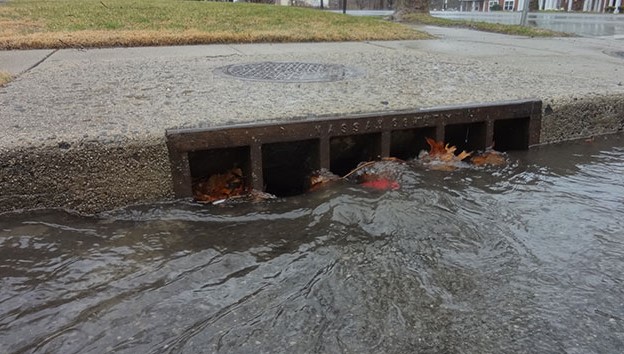A Stormwater Management Master Plan (SWMMP), is the framework that details how a municipalities’ stormwater infrastructure, or how stormwater (water from rain, melting snow, hail and sleet) is managed. These plans typically include recommendations for future improvements, conceptual designs, cost estimates and financing alternatives that address water quantity and quality, plus various environmental issues that impact the health of a community.
SWMMP’s are very important in allowing planners, public works directors and fiscal officers to work together to ensure a community’s stormwater system is functioning properly. A comprehensive SWMMP is important for a number of reasons, three of which have tremendous impact on the community.
1: SWMMPs impact a community’s functionality.
Structural and environmental damage from improper stormwater drainage has numerous financial and operational effects that can stop a community in its tracks. Without effective stormwater infrastructure we would have nowhere for stormwater to travel. Proper street gutters, stormwater collection and distribution piping, catch basins/inlets, detention basins, as well as ditches and drainages are essential in keeping water away from places it shouldn’t be.
SWMMPs help ensure that drainage systems are maintained and/or repaired before the potential problems occur. Preventing flood, standing water, and erratic drainage is an important component of a community’s daily functionality. Plus, SWMMPs are typically developed with public input offering a chance for the community to share issues or problems they’ve noticed and repairs they feel are necessary. SWMMPs also provide information on where improvements to stormwater systems can be made to positively impact daily life, or certainly the aftermath of a heavy rainstorm.
2: SWMMPs protect the community’s health and the environment.
Stormwater management systems protect the health of streams, rivers and aquatic life, by mitigating the effects of pollution. Stormwater is conveyed through collections systems back to streams and channels. Protecting our waterways from pollution is vital. Pollution can negatively impact fish, birds, and wildlife In addition, contaminated water impacts could impact the community’s drinking water as well as recreational opportunities.
SWMMPs evaluate environmental factors that negatively impact our ecosystem and provide recommendations to prevent damage from stormwater runoff, including channel erosion and instability, insight on preserving natural features and functions of a watershed, and information on developing and implementing water quality protection and restoration actions. All of which ensures the surrounding environment can support a thriving, healthy community.
3: SWMMPs allow municipalities to be strategic with funding and system repairs/upgrades.
Much like Capital Improvement Plans, SWMMPs allow government entities to plan and prevent rather than respond and repair. While managing stormwater infrastructure isn’t cheap, it’s much less expensive than dealing with runoff issues such as flooding, damaged property, contaminated waters, and environmental destruction. By prioritizing stormwater projects and repairs to system components, funding can be budgeted strategically, putting less financial strain on municipalities. While emergencies can’t always be anticipated, ensuring your stormwater system is in good condition can reduce flooding impacts and help your community be prepared for unpredictable weather/ environmental factors.
Interested in learning more about developing a Stormwater Management Master Plan, Contact WLC today. You can also view the City of Casper’s Stormwater Master Plan here, which WLC completed in 2013.

